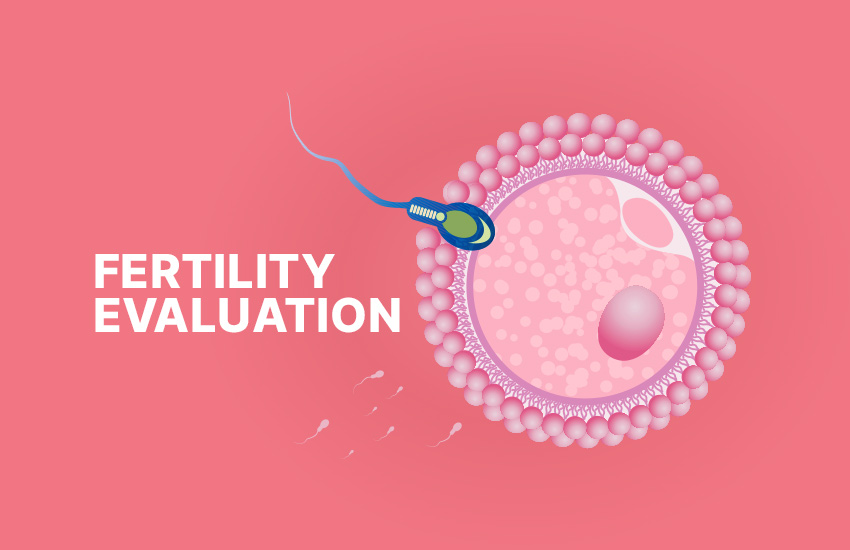Understanding Fertility Evaluation

Embarking on the journey to parenthood can be both exciting and daunting. For some, the path is straightforward, but for others, it may come with unexpected challenges. One of the critical steps in understanding and overcoming these challenges is a thorough fertility evaluation. This process can offer invaluable insights into your reproductive health and help pave the way to successful conception.
In this blog, we’ll guide you through the essential steps, tests, and next moves involved in a fertility evaluation, helping you take informed and proactive steps towards your dream of starting or growing your family.
When to Consider a Fertility Evaluation
Knowing when to consider a fertility evaluation is crucial. Generally, couples under the age of 35 should seek evaluation after one year of trying to conceive without success. However, for those over 35, it’s recommended to consult a specialist after six months of unsuccessful attempts. Early evaluation is particularly important for individuals over 35 due to the natural decline in fertility with age. Additionally, those with a history of irregular menstrual cycles, previous reproductive issues, or known medical conditions affecting fertility should seek evaluation sooner.
The Initial Steps in Fertility Evaluation
The fertility evaluation process typically begins with what is known as “The Work Up.” This involves a detailed review of both partners’ medical histories and basic physical examinations. For women, this includes understanding their menstrual cycles, as regular cycles often indicate regular ovulation. Menstrual cycle tracking can provide valuable information about fertility health and timing.
For men, the initial evaluation focuses on general health, lifestyle factors, and any previous medical issues that might affect fertility. Both partners’ medical histories help identify any underlying conditions that could contribute to infertility.
Advanced Diagnostic Tests
-
Pelvic Ultrasound
A pelvic ultrasound is a key diagnostic tool in fertility evaluations for women. This non-invasive procedure uses sound waves to create images of the reproductive organs. It helps identify the condition of the uterus, ovaries, and any potential abnormalities such as polyps, fibroids, or ovarian cysts. By assessing the health and structure of these organs, doctors can better understand any physical impediments to conception.
-
Hormone Assays
Hormone assays are critical in assessing ovarian reserve and overall reproductive health. Tests such as Follicle Stimulating Hormone (FSH), Luteinizing Hormone (LH), Anti-Mullerian Hormone (AMH), and prolactin levels provide insight into the functioning of the ovaries and the body’s ability to produce viable eggs. Elevated or abnormal hormone levels can indicate issues such as diminished ovarian reserve or hormonal imbalances that may hinder conception.
Assessing Ovulation
Ovulation assessment is another vital component of fertility evaluations. This involves monitoring the development and release of eggs from the ovaries. Follicular monitoring studies, often conducted via ultrasound, track the growth and maturation of ovarian follicles. These studies help ensure that ovulation is occurring at the optimal time for conception. By pinpointing the precise moment of ovulation, couples can better time intercourse or intrauterine insemination (IUI) for increased chances of success.
Fallopian Tube Assessment
Evaluating the fallopian tubes is crucial for identifying potential blockages or structural issues that could impede the egg’s journey to the uterus. Hysterosalpingography (HSG) is a common test used for this purpose. It involves injecting a contrast dye into the uterus and fallopian tubes and taking X-ray images to observe the flow of the dye. Blockages or abnormalities in the tubes can prevent sperm from reaching the egg, making this assessment essential for diagnosing certain types of infertility.
Male Fertility Evaluation
Male fertility evaluation primarily involves semen analysis, a non-invasive test that measures various aspects of sperm health. This includes sperm count, motility (movement), morphology (shape), and the presence of anti-sperm antibodies. These factors are crucial for understanding male fertility potential and identifying any issues that might require treatment. Semen analysis provides a comprehensive overview of male reproductive health and helps determine the best course of action for achieving conception.
Next Steps After Initial Tests
After completing the initial tests, the next step is a follow-up consultation with a fertility specialist. During this consultation, the specialist will review the test results and discuss potential next steps. Additional tests such as diagnostic laparoscopy, hysteroscopy, detailed hormonal assays, or genetic tests may be recommended based on the initial findings. These further evaluations help provide a clearer picture of any underlying issues and guide the development of a personalized treatment plan.
Also Read: Step-by-Step IVF Journey
Conclusion
A thorough fertility evaluation is a critical first step in understanding and addressing potential barriers to conception. By undergoing these evaluations, both men and women can gain valuable insights into their reproductive health and take proactive steps towards improving their chances of conception.
At Fyne IVF, we are dedicated to supporting you on this journey with comprehensive evaluations and personalized care. Our team of specialists is here to guide you through every step, ensuring you have the best possible chance of achieving your dream of parenthood. Together, we can navigate this journey towards successful conception and a healthy pregnancy.